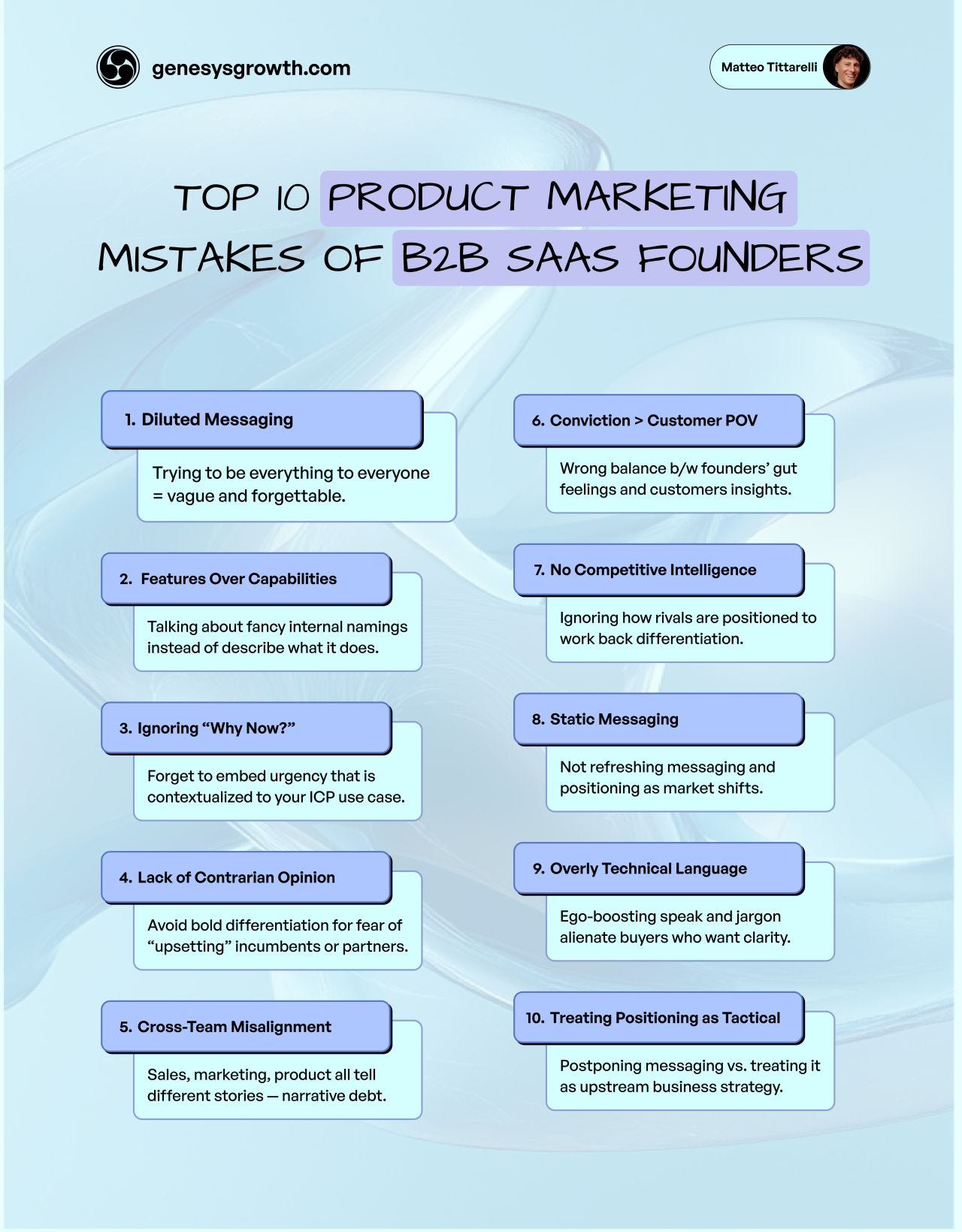Top 10 product marketing mistakes of B2B SaaS founders
Treat messaging like upstream business strategy, not copywriting.
Today’s newsletter is brought to you by Paddle.
Most app founders never get their first 1,000 users. If you want to break the cycle-step by step, you have to join Paddle’s Web Revenue Lab event series.
A 5-part live series for app founders who want to break through their first 1,000 users.
• From Aug 27 → Oct 22: Each session = 1 actionable blueprint.
• Step-by-step blueprints, web billing tips, how to scale Meta, and full-funnel optimizations.
• Featuring leaders like Steve Young, Lea Samrani, Hannah Parvaz, and more
Spots are limited. Save your seat now.
And now, on today’s post!
Brilliant founders often bury their message in jargon.
While average ones sometimes get most traction.
That doesn’t seem fair.
Both are smart. And both have strong products.
So why does one message resonate while the other sinks?
It’s not clever copy.
And it’s not squeezing in every feature.
The real issues are more structural.
→ Messaging that’s too diluted to appeal everyone.
→ Overloading on "agentic" feature names instead of capabilities.
→ GTM functions telling three different stories across different channels.
And those are just a few.
After consulting 40+ startups and speaking with 100+, I distilled my top 10 list of messaging mistakes across three categories.
It’s all packed into one graphic of the 10 most common pitfalls I see kill GTM traction.
You’ll see patterns that keep products from breaking through, no matter how good they are.
The positioning pitfalls that kill conversion
Here are the top 10 product marketing mistakes B2B SaaS founders make, based on the infographic:
1. Diluted messaging
Trying to be everything to everyone creates vague, forgettable positioning.
Sharp focus beats broad appeal every time.
2. Features over capabilities
Using fancy internal product names instead of describing what it actually does.
Buyers care about outcomes, not your engineering terminology.
3. Ignoring "why now?"
Forgetting to embed urgency that connects to your ICP's specific use case.
Timing creates the burning need to act.
4. Lack of contrarian opinion
Avoiding bold differentiation out of fear of "upsetting" incumbents or partners.
Safe positioning is invisible positioning.
5. Cross-team misalignment
Sales, marketing, and product all telling different stories creates narrative debt.
One story, told consistently, builds trust.
The research and strategy gaps
6. Conviction over customer POV
Wrong balance between founder gut feelings and actual customer insights.
Your opinion matters less than your buyer's reality.
7. No competitive intelligence
Ignoring how rivals position themselves makes differentiation impossible.
You can't stand out if you don't know the landscape.
8. Static messaging
Not refreshing positioning as markets shift and competitors evolve.
Yesterday's winning message becomes today's background noise.
The execution errors
9. Overly technical language
Ego-boosting jargon alienates buyers who want clarity above cleverness.
Simple wins over sophisticated.
10. Treating positioning as tactical
Postponing messaging work instead of treating it as upstream business strategy.
Positioning drives everything else in your GTM motion.
TL;DR?
→ The hardest part of messaging isn’t copywriting.
→ It’s treating messaging like upstream business strategy.
The fix? Start with customer research, build contrarian points of view, and keep messaging sharp and customer-focused.
If Common Room, Toast, AirOps, Ethena, Fiverr, Ahrefs trust me with their product marketing, you can too. I’ve helped 40+ SaaS companies nail their message — book a call to make yours just as strong.



